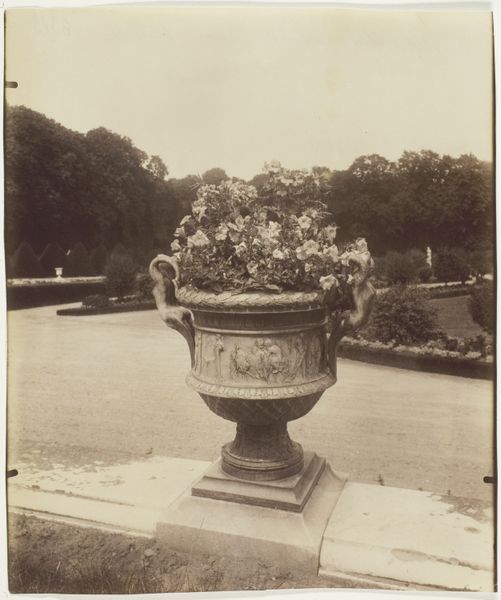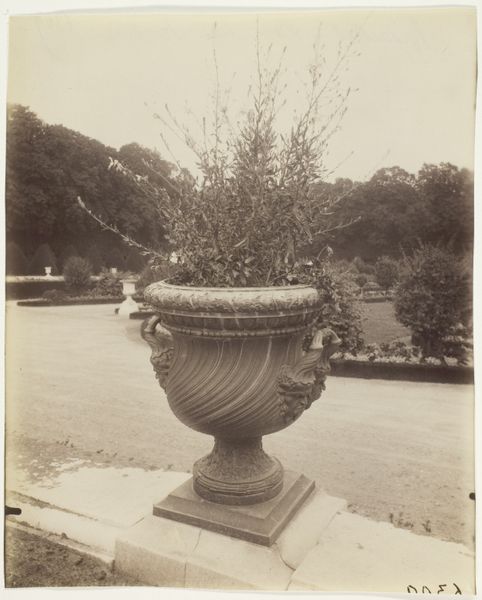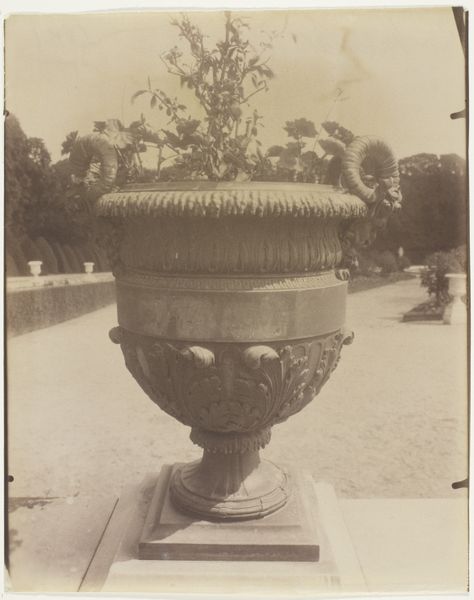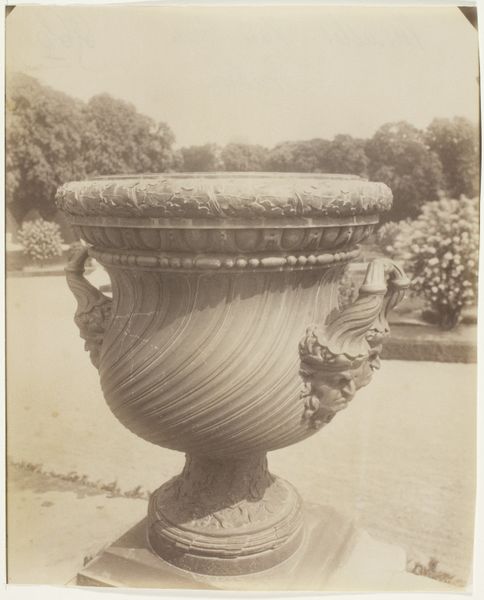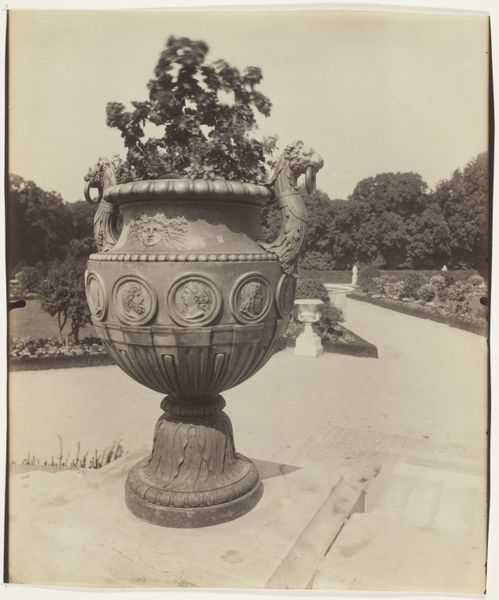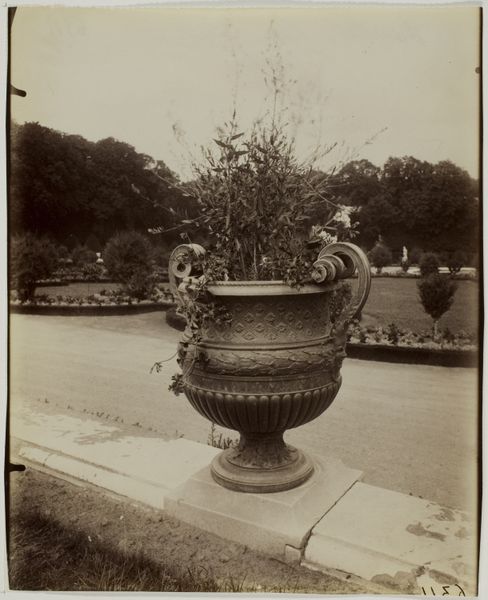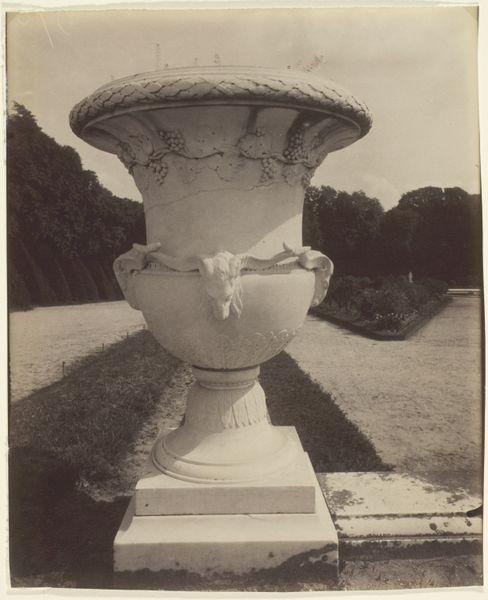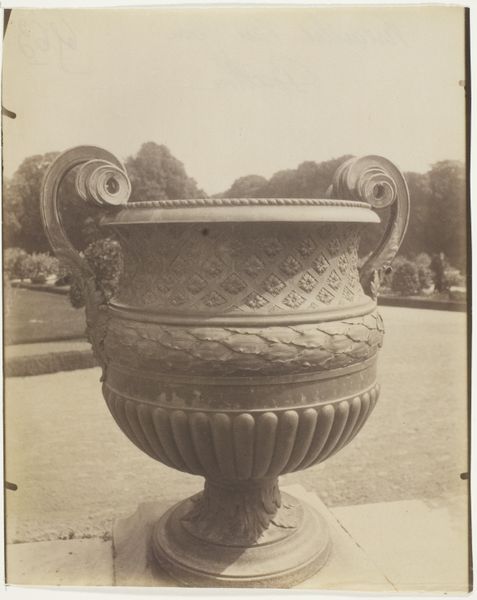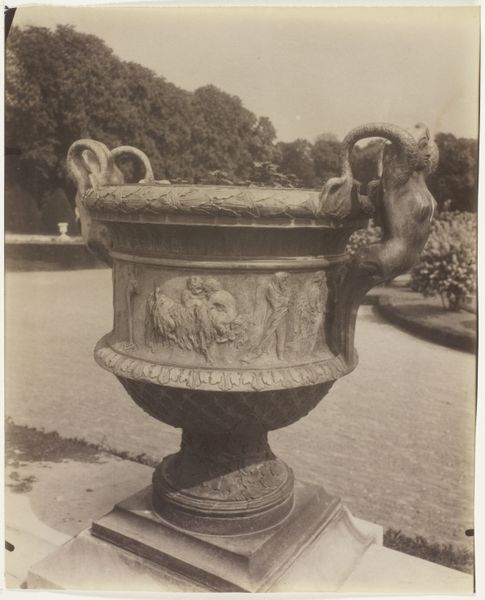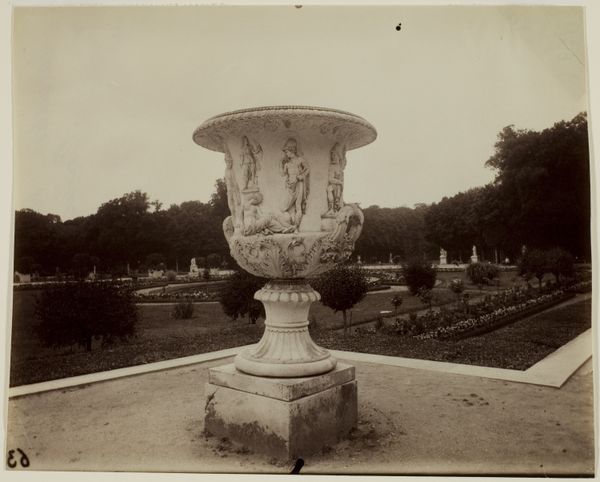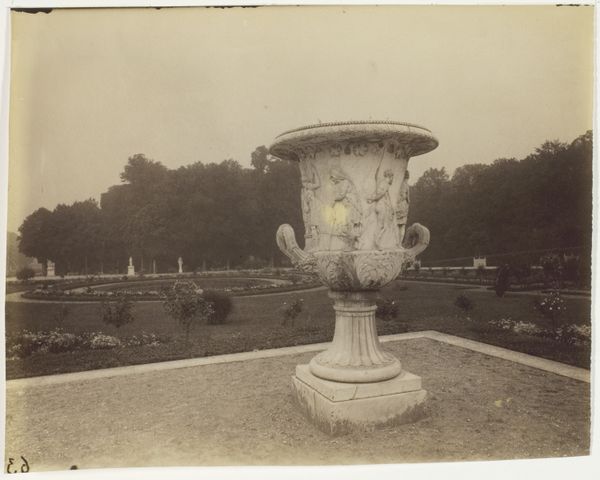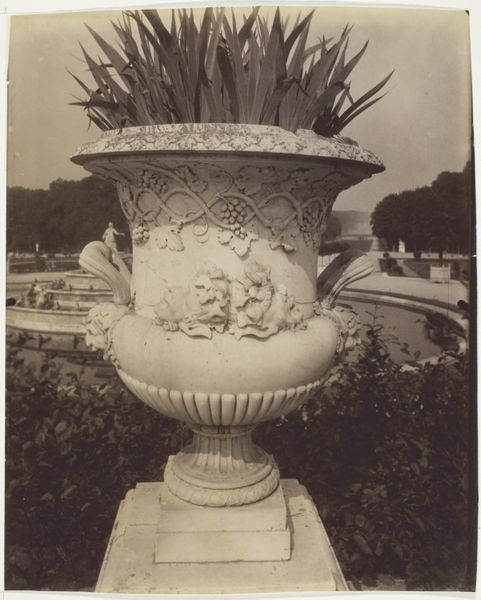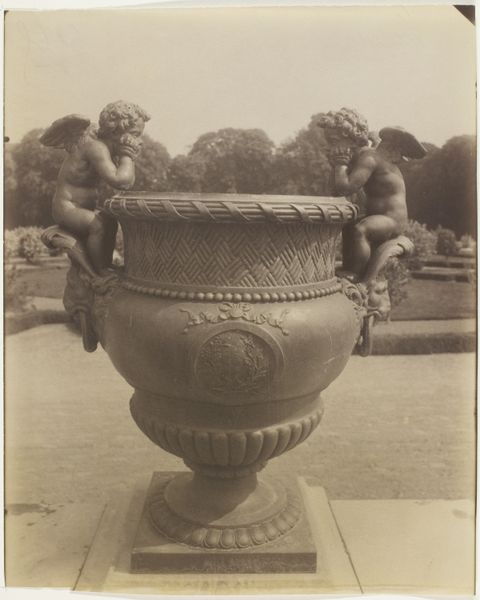
Dimensions: 21.6 × 18 cm (image/paper)
Copyright: Public Domain
Curator: This gelatin silver print, titled "Versailles, Vase par Ballin", was created in 1902 by Eugène Atget. Editor: It has this incredibly muted palette that just softens everything, lending an almost dreamlike quality to the garden scene. There is a very strong focal point given by the placement of the ornate vase on the lower central section of the composition. Curator: Absolutely. The vase itself, situated prominently, serves as a symbol of cultivated nature, doesn’t it? Versailles, after all, was intended as an assertion of control, a visual embodiment of royal power over the natural world. Atget often focused his lens on elements that spoke of a specific era and its social structures. Editor: But consider how the texture of the vase interacts with the less defined, almost blurred background. It’s a beautiful tension. The rigid geometry of the vase against the diffused greenery – an exploration of contrasting forms. I mean, just consider the relationship between positive and negative space. Curator: I'm interested in the flowers bursting forth from the vase. They are spilling, exceeding the rigid confines of the man-made structure. Is there an evocation here, perhaps, of a wildness that always threatens to reclaim the manicured landscape? The image hints at a fragility underlying the artificial perfection that was being asserted in the French gardens. Editor: Possibly. Or could it be simply Atget responding to a pre-existing geometry? I appreciate the tonal gradation; the photograph presents the movement of the light. It allows us to see the composition with such subtlety. The print surface itself seems almost luminous. Curator: It's fascinating to consider Atget's project as a kind of visual preservation. He sought to capture these relics of a specific time and place before they disappeared, holding memory in these tangible images. Editor: Looking closely at the silver print itself—the materiality contributes enormously. The delicate balance is achieved only with light, form, and the artist's hand. The image really exists at the edge of something else. Curator: Well, I leave with the impression that, beneath its formal qualities, the photograph also reflects the power structures in place in early 20th century French society. Editor: And I remain fascinated by its visual construction, the play of texture, light, and form that really makes it captivating.
Comments
No comments
Be the first to comment and join the conversation on the ultimate creative platform.
